In the world of pasta, there are countless varieties to choose from, each offering a unique shape and texture that can completely transform a dish. Two popular choices are rotini and penne – both with their own distinct characteristics that can impact the overall dining experience. If you’re torn between these two pasta shapes and can’t decide which one to add to your pantry, fear not. This article will delve into the differences between rotini and penne, helping you make an informed choice based on your preferences. Let’s start by looking at rotini, a spiral-shaped pasta that is known for its corkscrew design. This unique shape not only makes rotini visually appealing but also allows it to hold onto sauces and ingredients exceptionally well. The nooks and crannies of rotini trap flavors, ensuring that every bite is packed with deliciousness. Whether you’re whipping up a creamy Alfredo sauce or a hearty Bolognese, rotini is an excellent choice for dishes that demand a pasta shape that can cling to all the elements. On the other hand, we have penne – a tube-shaped pasta cut diagonally at the ends, creating a signature slanted edge. Penne is revered for its versatility, making it a popular choice for a wide range of recipes. The hollow center of penne allows it to soak up sauces like a sponge, while the slanted edges provide a delightful texture that adds a bit of oomph to each bite. Whether you’re tossing penne in a zesty tomato sauce or incorporating it into a flavorful pasta salad, this pasta shape always delivers a satisfying eating experience. When it comes to their cooking properties, rotini and penne are fairly similar. Both pasta shapes are quick to cook, requiring about 7-10 minutes in boiling water to reach al dente perfection. This makes them suitable for weeknight dinners when you need a reliable pasta shape that won’t keep you waiting. Additionally, both rotini and penne can be incorporated into a wide array of recipes, from classic Italian dishes to modern fusion creations. In terms of texture, rotini and penne offer slightly different mouthfeels. Rotini’s spiral shape provides a chewy and satisfying bite, while its twisted design ensures that sauces and ingredients stay nestled within the pasta. On the other hand, penne’s tubular shape offers a more consistent texture throughout, with the hollow center providing a unique sensation as you take each forkful. Whether you prefer the intricate spirals of rotini or the straightforward tubes of penne, both pasta shapes excel in their own right. Nutritionally speaking, rotini and penne are quite similar. Both pasta shapes are made from durum wheat semolina, providing a good source of carbohydrates for energy.
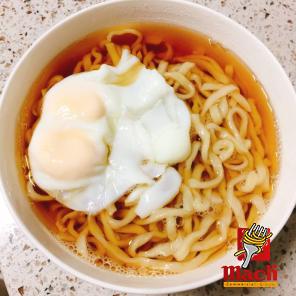
.
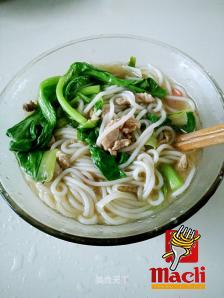 They also contain fiber, which aids in digestion and helps keep you feeling full. When paired with nutrient-rich sauces and ingredients, rotini and penne can form the basis of a balanced and satisfying meal that nourishes both body and soul. If you’re looking to add a touch of creativity to your pasta dishes, rotini may be the way to go. Its playful shape can elevate simple recipes and make them more visually appealing. Whether you’re cooking for picky eaters who are drawn to fun shapes or you simply want to add a whimsical touch to your culinary creations, rotini’s corkscrew design can help you achieve that goal. On the other hand, if you prefer a pasta shape that offers versatility and pairs well with a wide range of sauces, penne is a solid choice. Its tubular form is a timeless classic that never fails to deliver a satisfying dining experience. Whether you’re simmering penne in a rich meat sauce or tossing it with fresh herbs and olive oil, this pasta shape can adapt to any flavor profile with ease. In conclusion, the choice between rotini and penne ultimately comes down to personal preference. If you enjoy the playful appearance and sauce-trapping abilities of rotini, go ahead and stock up on this spiral-shaped pasta. On the other hand, if you appreciate the versatility and texture of penne, make room for this tube-shaped pasta in your pantry. Whichever pasta shape you choose, rest assured that both rotini and penne have their own unique qualities that can enhance your culinary creations and delight your taste buds. So, the next time you’re faced with the question of rotini vs penne, trust your instincts and select the pasta shape that resonates with you the most. Happy cooking! In the grand scheme of pasta preferences, the debate between rotini and penne may seem trivial to some, but for pasta enthusiasts and culinary connoisseurs, the choice between these two shapes can have a significant impact on the overall dining experience. When it comes to pairing sauces with pasta, both rotini and penne offer their own advantages. Rotini’s twisted design excels at trapping chunky sauces and ingredients, ensuring that each bite is a harmonious blend of flavors. Whether you’re indulging in a hearty ragu or a creamy carbonara, rotini’s ability to cradle the sauce creates a delightful and satisfying eating experience. On the other hand, penne’s tubular shape is a favorite among those who appreciate a more uniform pasta-to-sauce ratio.
They also contain fiber, which aids in digestion and helps keep you feeling full. When paired with nutrient-rich sauces and ingredients, rotini and penne can form the basis of a balanced and satisfying meal that nourishes both body and soul. If you’re looking to add a touch of creativity to your pasta dishes, rotini may be the way to go. Its playful shape can elevate simple recipes and make them more visually appealing. Whether you’re cooking for picky eaters who are drawn to fun shapes or you simply want to add a whimsical touch to your culinary creations, rotini’s corkscrew design can help you achieve that goal. On the other hand, if you prefer a pasta shape that offers versatility and pairs well with a wide range of sauces, penne is a solid choice. Its tubular form is a timeless classic that never fails to deliver a satisfying dining experience. Whether you’re simmering penne in a rich meat sauce or tossing it with fresh herbs and olive oil, this pasta shape can adapt to any flavor profile with ease. In conclusion, the choice between rotini and penne ultimately comes down to personal preference. If you enjoy the playful appearance and sauce-trapping abilities of rotini, go ahead and stock up on this spiral-shaped pasta. On the other hand, if you appreciate the versatility and texture of penne, make room for this tube-shaped pasta in your pantry. Whichever pasta shape you choose, rest assured that both rotini and penne have their own unique qualities that can enhance your culinary creations and delight your taste buds. So, the next time you’re faced with the question of rotini vs penne, trust your instincts and select the pasta shape that resonates with you the most. Happy cooking! In the grand scheme of pasta preferences, the debate between rotini and penne may seem trivial to some, but for pasta enthusiasts and culinary connoisseurs, the choice between these two shapes can have a significant impact on the overall dining experience. When it comes to pairing sauces with pasta, both rotini and penne offer their own advantages. Rotini’s twisted design excels at trapping chunky sauces and ingredients, ensuring that each bite is a harmonious blend of flavors. Whether you’re indulging in a hearty ragu or a creamy carbonara, rotini’s ability to cradle the sauce creates a delightful and satisfying eating experience. On the other hand, penne’s tubular shape is a favorite among those who appreciate a more uniform pasta-to-sauce ratio.
..
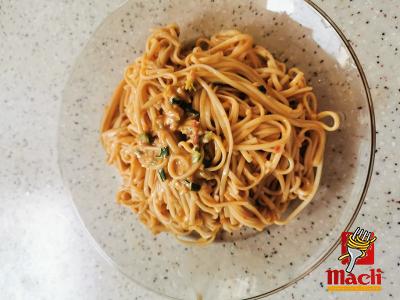 The hollow center of penne acts as a conduit for sauces to seep into, resulting in a harmonious fusion of flavors in every mouthful. Whether you’re relishing a spicy Arrabbiata or a light lemon and herb sauce, penne’s texture ensures that each forkful is a delightful symphony of tastes and textures. One consideration to keep in mind when choosing between rotini and penne is the intended presentation of your dish. Rotini’s playful corkscrew design adds a touch of whimsy to any plate, making it an ideal choice for dishes where visual appeal is a priority. Whether you’re crafting a colorful pasta salad or a vibrant primavera dish, rotini’s unique shape can elevate the presentation and make your meal a feast for the eyes as well as the palate. On the other hand, if you’re aiming for a more classic and refined look, penne’s sleek and uniform tubes provide a timeless elegance that can complement a wide variety of sauces and ingredients. Whether you’re serving a traditional marinara or a sophisticated vodka cream sauce, penne’s understated appearance allows the flavors of the dish to take center stage, making it a versatile choice for both casual meals and special occasions. In terms of versatility, both rotini and penne shine in their own right. Rotini’s spiral shape lends itself well to dishes with chunky ingredients such as vegetables, meats, and cheeses, as the twists of the pasta can help ensnare these elements, creating a delightful medley of flavors and textures. Whether you’re crafting a decadent baked pasta dish or a vibrant pasta primavera, rotini’s shape can add dimension and complexity to your culinary creations. Penne, with its straight tubes and slanted edges, is equally adaptable and can be used in a wide range of dishes, from classic pasta bakes to contemporary stir-fries. The hollow center of penne allows it to soak up sauces and flavors, making it a versatile canvas for a multitude of culinary experiments. Whether you’re incorporating penne into a hearty minestrone soup or tossing it with pesto and grilled vegetables, this pasta shape can hold its own in a variety of recipes. When it comes to texture, both rotini and penne offer distinct mouthfeels that can influence the overall dining experience. Rotini’s spiral shape provides a chewy and substantial bite, with each turn of the pasta offering a different textural experience. The twists and turns of rotini create a satisfying mouthfeel that can enhance the enjoyment of the meal, especially when paired with robust sauces and ingredients. Penne, with its smooth exterior and hollow center, offers a more consistent texture throughout each mouthful. The slanted edges of penne provide a gentle resistance as you bite into the pasta, adding a subtle complexity to the eating experience. Whether you prefer the chewiness of rotini or the smoothness of penne, both pasta shapes offer a satisfying and pleasurable texture that can elevate the enjoyment of your meal. In terms of culinary applications, both rotini and penne have their strengths and can be used in a variety of recipes to great effect.
The hollow center of penne acts as a conduit for sauces to seep into, resulting in a harmonious fusion of flavors in every mouthful. Whether you’re relishing a spicy Arrabbiata or a light lemon and herb sauce, penne’s texture ensures that each forkful is a delightful symphony of tastes and textures. One consideration to keep in mind when choosing between rotini and penne is the intended presentation of your dish. Rotini’s playful corkscrew design adds a touch of whimsy to any plate, making it an ideal choice for dishes where visual appeal is a priority. Whether you’re crafting a colorful pasta salad or a vibrant primavera dish, rotini’s unique shape can elevate the presentation and make your meal a feast for the eyes as well as the palate. On the other hand, if you’re aiming for a more classic and refined look, penne’s sleek and uniform tubes provide a timeless elegance that can complement a wide variety of sauces and ingredients. Whether you’re serving a traditional marinara or a sophisticated vodka cream sauce, penne’s understated appearance allows the flavors of the dish to take center stage, making it a versatile choice for both casual meals and special occasions. In terms of versatility, both rotini and penne shine in their own right. Rotini’s spiral shape lends itself well to dishes with chunky ingredients such as vegetables, meats, and cheeses, as the twists of the pasta can help ensnare these elements, creating a delightful medley of flavors and textures. Whether you’re crafting a decadent baked pasta dish or a vibrant pasta primavera, rotini’s shape can add dimension and complexity to your culinary creations. Penne, with its straight tubes and slanted edges, is equally adaptable and can be used in a wide range of dishes, from classic pasta bakes to contemporary stir-fries. The hollow center of penne allows it to soak up sauces and flavors, making it a versatile canvas for a multitude of culinary experiments. Whether you’re incorporating penne into a hearty minestrone soup or tossing it with pesto and grilled vegetables, this pasta shape can hold its own in a variety of recipes. When it comes to texture, both rotini and penne offer distinct mouthfeels that can influence the overall dining experience. Rotini’s spiral shape provides a chewy and substantial bite, with each turn of the pasta offering a different textural experience. The twists and turns of rotini create a satisfying mouthfeel that can enhance the enjoyment of the meal, especially when paired with robust sauces and ingredients. Penne, with its smooth exterior and hollow center, offers a more consistent texture throughout each mouthful. The slanted edges of penne provide a gentle resistance as you bite into the pasta, adding a subtle complexity to the eating experience. Whether you prefer the chewiness of rotini or the smoothness of penne, both pasta shapes offer a satisfying and pleasurable texture that can elevate the enjoyment of your meal. In terms of culinary applications, both rotini and penne have their strengths and can be used in a variety of recipes to great effect.
…
 Rotini’s spiral shape is well-suited to dishes that require a pasta shape to hold onto sauces and ingredients, making it an excellent choice for baked pasta dishes, creamy sauces, and chunky vegetable medleys. Whether you’re crafting a cheesy pasta bake or a luscious macaroni and cheese, rotini’s corkscrew design can add depth and complexity to your dish. Penne, with its versatile and adaptable nature, can be incorporated into a wide range of recipes, from traditional Italian dishes to innovative fusion creations. The hollow center of penne allows it to soak up flavors like a sponge, making it an ideal choice for dishes with light and delicate sauces. Whether you’re tossing penne in a bright and tangy tomato sauce or dressing it with a simple olive oil and herb combination, this pasta shape can enhance the flavors of the dish and provide a satisfying eating experience. In the world of culinary creativity, the choice between rotini and penne ultimately comes down to personal preference and the requirements of the dish. If you’re seeking a pasta shape that can add visual interest and hold onto sauces and ingredients with flair, rotini is a fantastic choice. Its playful corkscrew design and sauce-trapping abilities can elevate simple dishes and turn them into culinary masterpieces. On the other hand, if you’re looking for a versatile and adaptable pasta shape that pairs well with a wide range of sauces and ingredients, penne is an excellent option. Its sleek tubes and hollow center make it a reliable choice for a myriad of recipes, from classic pasta dishes to modern interpretations. Whether you’re a fan of rotini’s whimsical shape or penne’s classic elegance, both pasta shapes offer unique qualities that can enhance your culinary creations and bring joy to your dining experience. In conclusion, the debate between rotini and penne is a delicious showdown of pasta shapes, each with its own distinctive characteristics and culinary merits. Whether you’re a fan of rotini’s playful spirals or penne’s classic tubes, both pasta shapes have a place in the kitchen and can be used to create a wide variety of delectable dishes. So, the next time you’re faced with the choice between rotini and penne, trust your instincts and select the pasta shape that speaks to your culinary desires. Whichever pasta shape you choose, rest assured that both rotini and penne have something special to offer and can elevate your dining experience to new heights. Happy cooking and buon appetito!
Rotini’s spiral shape is well-suited to dishes that require a pasta shape to hold onto sauces and ingredients, making it an excellent choice for baked pasta dishes, creamy sauces, and chunky vegetable medleys. Whether you’re crafting a cheesy pasta bake or a luscious macaroni and cheese, rotini’s corkscrew design can add depth and complexity to your dish. Penne, with its versatile and adaptable nature, can be incorporated into a wide range of recipes, from traditional Italian dishes to innovative fusion creations. The hollow center of penne allows it to soak up flavors like a sponge, making it an ideal choice for dishes with light and delicate sauces. Whether you’re tossing penne in a bright and tangy tomato sauce or dressing it with a simple olive oil and herb combination, this pasta shape can enhance the flavors of the dish and provide a satisfying eating experience. In the world of culinary creativity, the choice between rotini and penne ultimately comes down to personal preference and the requirements of the dish. If you’re seeking a pasta shape that can add visual interest and hold onto sauces and ingredients with flair, rotini is a fantastic choice. Its playful corkscrew design and sauce-trapping abilities can elevate simple dishes and turn them into culinary masterpieces. On the other hand, if you’re looking for a versatile and adaptable pasta shape that pairs well with a wide range of sauces and ingredients, penne is an excellent option. Its sleek tubes and hollow center make it a reliable choice for a myriad of recipes, from classic pasta dishes to modern interpretations. Whether you’re a fan of rotini’s whimsical shape or penne’s classic elegance, both pasta shapes offer unique qualities that can enhance your culinary creations and bring joy to your dining experience. In conclusion, the debate between rotini and penne is a delicious showdown of pasta shapes, each with its own distinctive characteristics and culinary merits. Whether you’re a fan of rotini’s playful spirals or penne’s classic tubes, both pasta shapes have a place in the kitchen and can be used to create a wide variety of delectable dishes. So, the next time you’re faced with the choice between rotini and penne, trust your instincts and select the pasta shape that speaks to your culinary desires. Whichever pasta shape you choose, rest assured that both rotini and penne have something special to offer and can elevate your dining experience to new heights. Happy cooking and buon appetito!
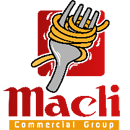
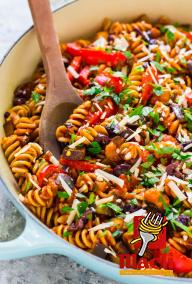
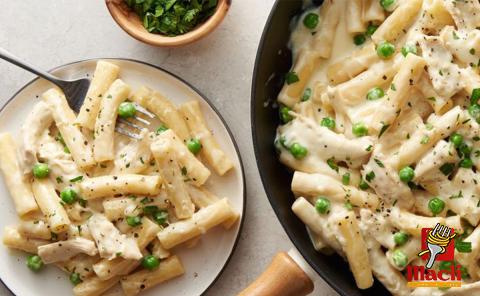


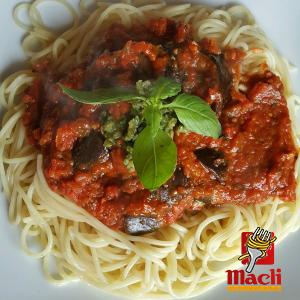
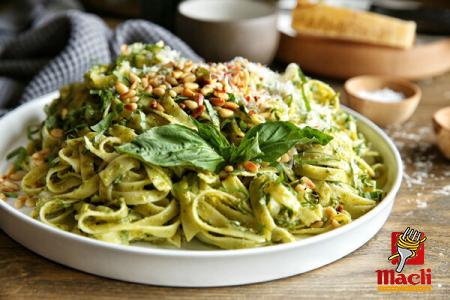
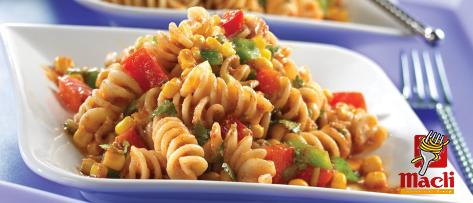
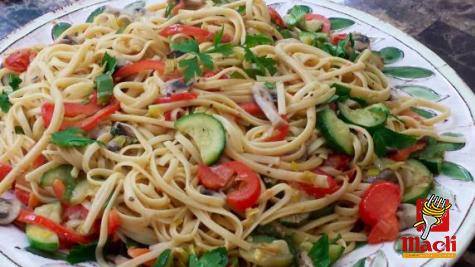
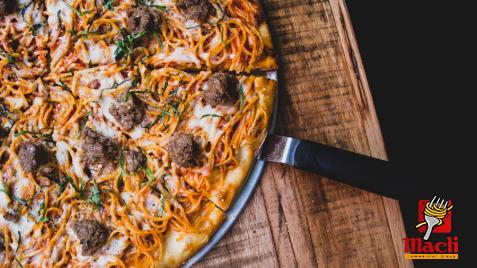
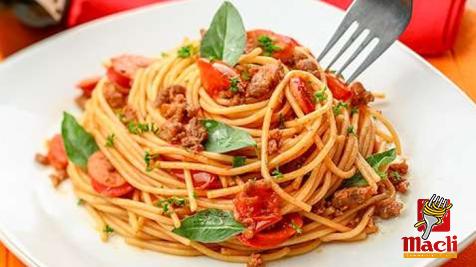
Your comment submitted.